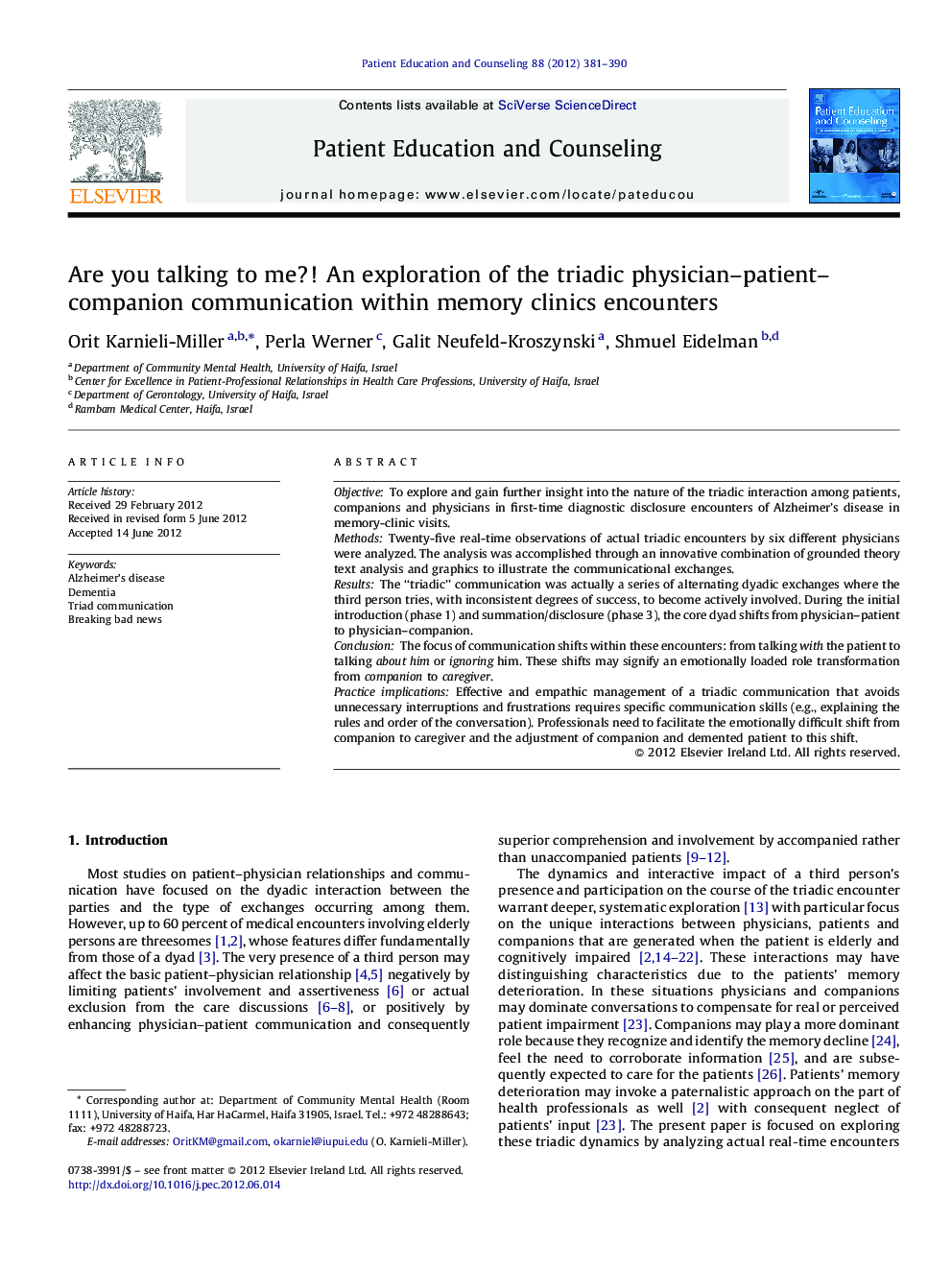| Article ID | Journal | Published Year | Pages | File Type |
|---|---|---|---|---|
| 3815164 | Patient Education and Counseling | 2012 | 10 Pages |
ObjectiveTo explore and gain further insight into the nature of the triadic interaction among patients, companions and physicians in first-time diagnostic disclosure encounters of Alzheimer's disease in memory-clinic visits.MethodsTwenty-five real-time observations of actual triadic encounters by six different physicians were analyzed. The analysis was accomplished through an innovative combination of grounded theory text analysis and graphics to illustrate the communicational exchanges.ResultsThe “triadic” communication was actually a series of alternating dyadic exchanges where the third person tries, with inconsistent degrees of success, to become actively involved. During the initial introduction (phase 1) and summation/disclosure (phase 3), the core dyad shifts from physician–patient to physician–companion.ConclusionThe focus of communication shifts within these encounters: from talking with the patient to talking about him or ignoring him. These shifts may signify an emotionally loaded role transformation from companion to caregiver.Practice implicationsEffective and empathic management of a triadic communication that avoids unnecessary interruptions and frustrations requires specific communication skills (e.g., explaining the rules and order of the conversation). Professionals need to facilitate the emotionally difficult shift from companion to caregiver and the adjustment of companion and demented patient to this shift.
